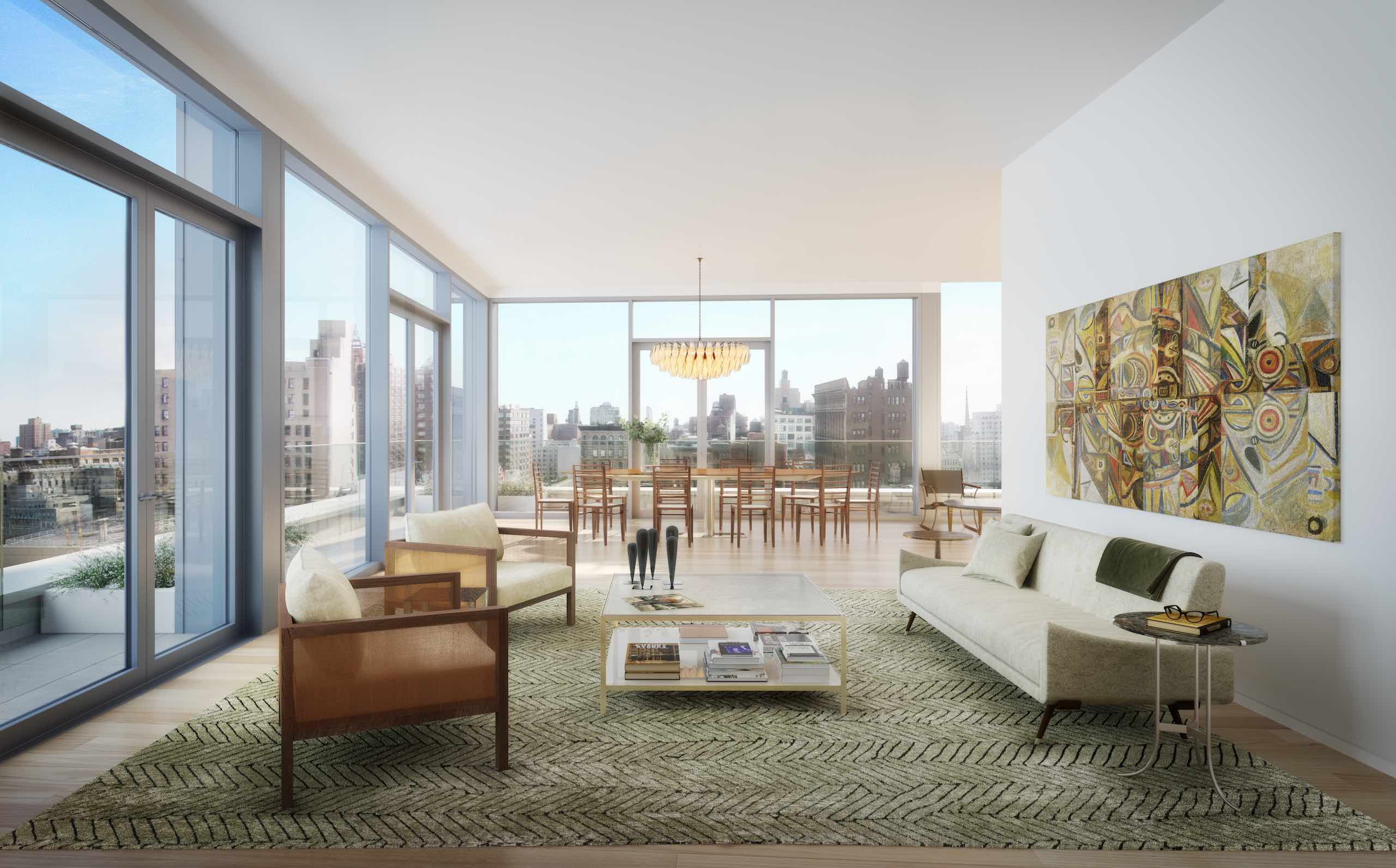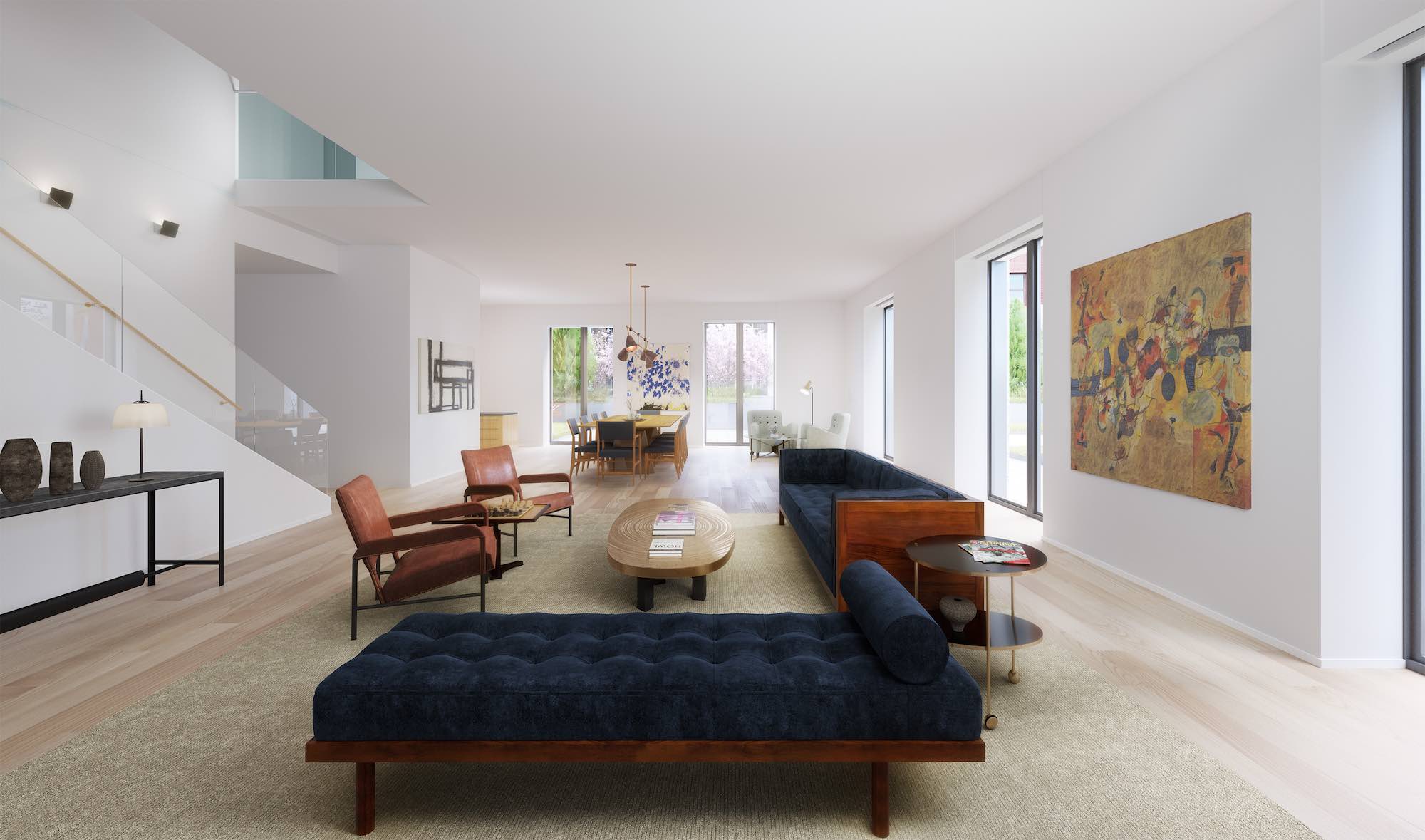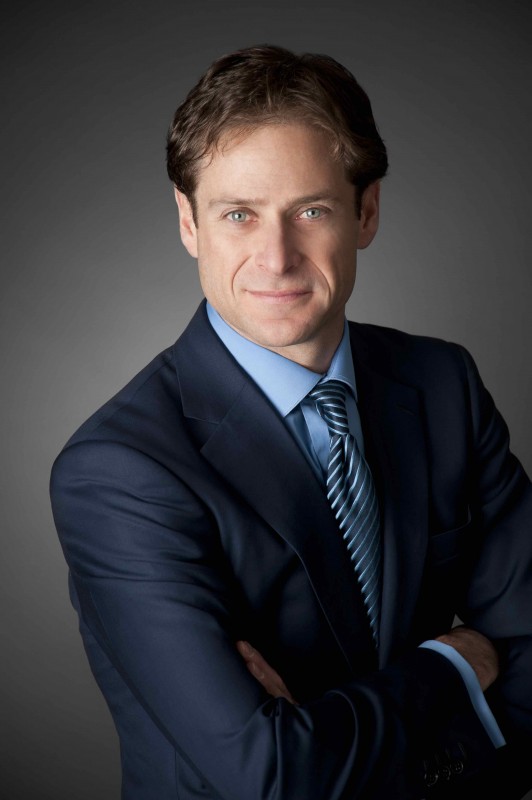One-On-One With Haute Real Estate Developer Billy Macklowe
At almost 50 years old, Billy Macklowe has spent nearly two-thirds of his life in New York City real estate. After leaving his father’s firm eight years ago, Macklowe started his own firm, William Macklowe Company, and is forging a new, bright path. His residential condominium, at 21 E. 12th Street, was designed by Annabelle Selldorf, the renowned architect and a great friend of Macklowe’s. The 80-percent-sold building is a slender, 22-story tower set back on a two-story podium respecting the scale of the neighborhood and allowing for abundant light both on the street and for the condos above. With the project almost behind him and many ahead, Macklowe’s love for building in New York City is stronger than ever.
Haute Residence spoke with the experienced and jocular developer to find out how the NYC residential market has evolved, what it is like working with Selldorf and why he thinks the Upper East Side (UES) is the new Williamsburg.

Photo Credit: Wordsearch
HL: How did you start working with Annabelle Selldorf?
BM: Close to 12 years ago, my wife and I bought a property in Hamptons. We interviewed half a dozen very prominent, modern, minimalist architects. Annabelle was our last interview; we clicked and hired her on the spot.
The design of our house developed so seamlessly with Annabelle. We spoke a great common language. We built a very modern, very deconstructed, timeless house. It is not small, but Annabelle creates room volumes and flow that are very comfortable. She understands modern and minimal, but also luxury and livability. Annabelle has a fabulous comprehension of how people live.
Even though I have been in this business for almost 30 years, and I have been involved in some pretty remarkable things, building a house was really daunting. New York City, at its essence, is a rectangular city with its high-rises and grid streets. That defines how you put your pencil to paper. When you build in New York, you deal with the constraints of urban development. If you look at building a house, it is your dirt, and you have to figure out what to do with it.

Photo Credit: Wordsearch
HL: What is the value of outdoor space to 21 E. 12th?
BM: Outdoor space is a great feature, but it depends on what the space is. A 4×10 terrace does nothing for me. It’s a great place to store bikes or put pooch potty, but that’s about how I would use that. We have two urban townhouse units that each has almost 3,300 square feet of private, outdoor terraces. In the back of the building, there is an amenity lounge for tenants, a kids’ playroom and a gym, all of which have access to the common outdoor space.
We had an amazing opportunity to build a great tower on a podium, which created a dramatic green space above street level. It is not easy to assemble and aggregate land in the Village. Conversions are great, but then you have to deal with their issues, like being quirky, dark, low-rises with high carrying charges. With 21 E. 12th Street, we started with a clean slate and got to build from the ground up. That defines the success of this project.

Photo Credit: Wordsearch
HL: How do you think Greenwich Village has evolved over the years? How does 21 E. 12th contribute to the neighborhood?
BM: This is a New York building for New Yorkers. The Village has a great low-rise buildings and charming streets. It is a neighborhood that commands great value and attention. The Village has always been and continues to be one of the most supply-constrained markets in the city. People want to live in the Village, and we put together the right units for this market.
There used to be an old, industrial garage building on this site. The Village is a vocal community. They really look at their developments, they take them seriously and everyone is very interested in what is going on in the neighborhood. Shockingly, some people did not want that garage to go. Even though our building is tall, our setbacks allow more light and air to come through to the street than that big, heavy, bulky mass that was previously on the site. And contextually, it made no sense to have this garage in this neighborhood.
It’s really about how to create moments, how to create little touch points that make a home special. Annabelle is a proud Village resident herself. What she created is exceptional, and it had to be because she walks by it every day, since she lives in the neighborhood.

Photo Credit: Selldorf Architects / Nikolas Keonig
HL: What is the next hot market in Manhattan?
BM: Our building is not a story about the state the general market, it is really about location, location, location. If we built our building somewhere else, notwithstanding the terrific product we have, I think it would have been a struggle.
It is hard for me to say what the next hot neighborhood is. Look at all of the cranes that are back on the Upper East Side because of the Second Avenue subway. I joke the UES is the next Williamsburg because it is cheap and the best deal in town. I keep looking for flannel shirts and facial hair on Lexington [Avenue].
For years, New York was defined by neighborhoods and zip codes. When the 212 phone numbers got blown out and they created all the new area codes, everyone freaked out because 212 had cache. When the 10021 zip code was broken up, everyone freaked. Not to be dramatic, but if you look at the massive gentrification that occurred in Manhattan and Brooklyn, the concept of neighborhood has been eviscerated. It is a big change, and people live differently now.
The sectors we love now are office and medical development and community facilities. We are about to commence construction on some medical offices on the hospital corridor of the UES. There are a couple of billion dollars happening there and a ceaseless appetite for the space.
I like to build things, and we have a great team with everyone pulling on the oars. It is not about the mind of one—it’s a combination of everyone that yields results.













